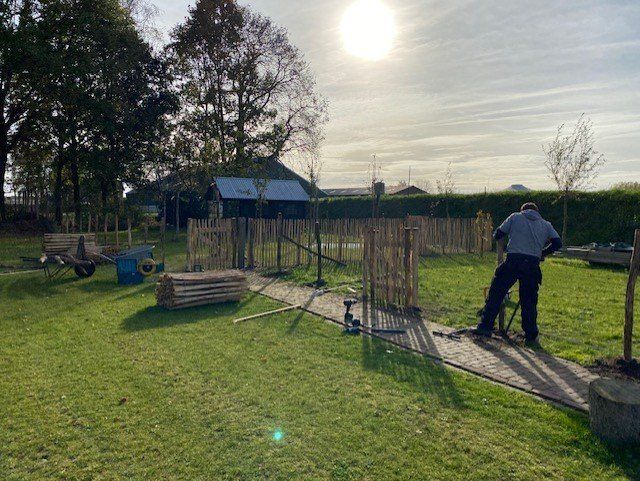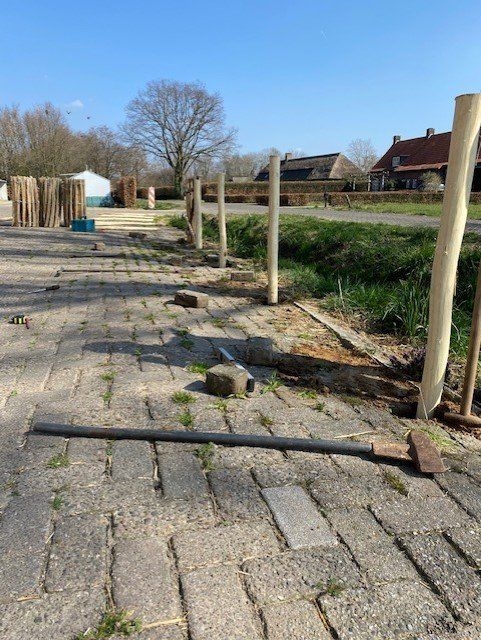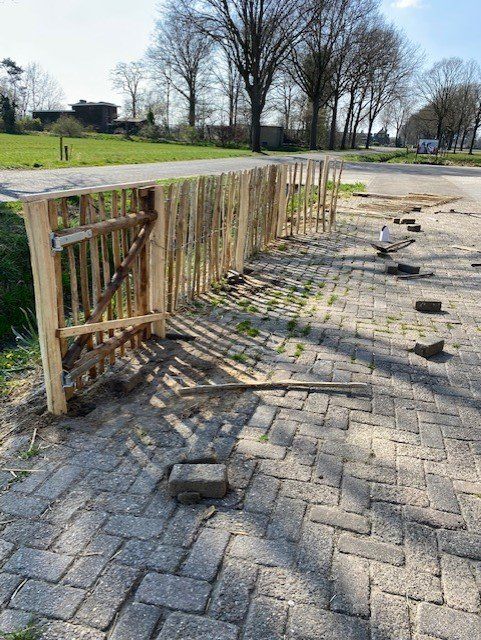MONTAGE
Free assembly
Would you like to receive a quote for the installation of your fencing, gates or posts? Which can! Indicate the following points to us via email and receive a quotation within 24 hours.
- How many meters of fencing do you need?
- Do you want a gate in it? if so, how many and what size?
- What height and slat spacing of the fence?
- How many corners and start and end points are there?
- Other things to take into account
- Can a motor drill be used to drill anywhere? (Think of cables, pipes, debris, etc.)
- Location
Mail this information to info@woutishout.com, and we will be happy to make you a tailor-made offer within 24 hours.
fencing
Height
The height of the fence is determined by the purpose of the fence. Do you want to keep small pets indoors or separate your vegetable garden? Then fencing 80 cm high is often chosen.
Do you want to protect your garden, pond, meadow or nature? Then you can opt for fencing that is 100 cm high. This fencing is the most chosen by our customers.
Fencing of 120 cm high is often used in combination with a chicken coop or to separate animals such as calves or pigs.
Do you want to make a fence out of your fencing or completely shield something in your garden? Then choose the height 150 or 180 cm.
Slat spacing
The fencing consists of two types of slat spacing. Slat spacing 3-5 cm for a denser separation. This distance is often used in a chicken coop or vegetable garden.
Slat spacing of 5-8 cm provides more visibility and is often used in the garden, around the pond or along your driveway.
Poles
Length
Usually the posts are placed about 60 cm into the ground. This means that posts of 160 cm are chosen for fencing of 100 cm. In the corners you can possibly use longer and thicker posts for a little more strength.
Diameter
Robinia posts with a diameter of 6-8 cm are used to screw the fencing on. For leg posts or corner posts, we recommend posts of 8-10 or 10-12 cm. You can find these poles here.
Number of posts
Depending on the height of the fence, the posts are driven into the ground every 1.06-40410021.00 metres. High fencing often requires more support, so the posts are spaced closer together.
Confirmation
After you have determined the length, diameter and number of posts, you can divide the posts. Depending on the height of the fence you can space the posts with a distance of about 1.06-40410021.00 meters apart. You can stretch a thread so that you can drill the posts in a straight line. Then you drill the posts about 60 cm into the ground so that the post is the same height as the fencing above the ground (sometimes people hold the post slightly lower than the fencing). In the beginning and end pieces or the corners you could possibly choose a longer post for a little more strength.
After the posts have been divided and drilled into the ground, you can start attaching the fencing. Unroll your first roll of fencing standing up along the posts. Be sure to screw the fencing to the side of the post you are facing (post on the back of the fencing). Screw the first bar straight onto your starting post by screwing the screws straight through the bar into the post. Stainless steel torx screws of 4.0x70mm are used for screwing. You can then stretch the bars behind the next post with a stick or shovel. When the fence is stretched taut and straight, the next bar can be screwed onto the post. make sure that the fencing is screwed in a straight line.
Linking 2 rolls is done by removing the last bar of the roll and connecting the iron wire to the first bar of the new roll.






